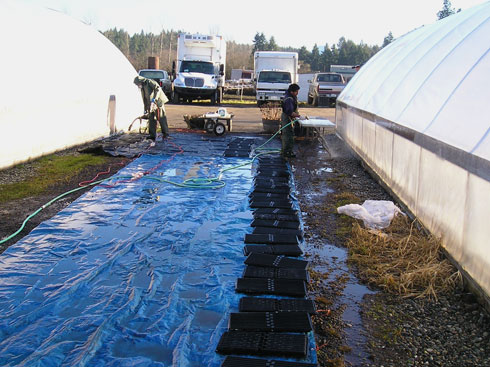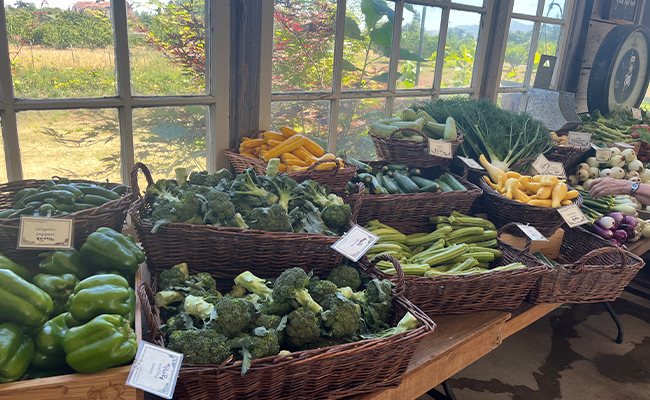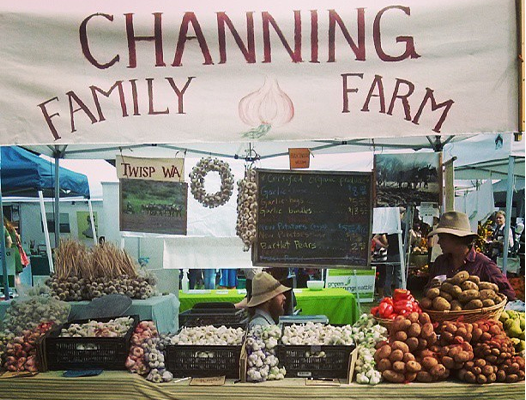January Chores
Spring cleaning always begins a bit early on the farm. As extra hands become available, we can concentrate on some of the big housekeeping projects from last season as well as prepare for the year ahead. Our stores of potatoes and roots are moving out steadily; empty harvest bins are stacking up outside the packing shed and will need to be sorted for repair, then washed and stored out back in the staging area. Row cover which is not in tatters will be gathered, rolled up and stockpiled until planting resumes next month.
Seeds have not yet been ordered, but there is plenty to do before the line rolls again in February. Probably the most exciting item on the agenda is the preparation of the greenhouses. We have four greenhouses measuring 30 feet by 144 feet, and a fifth smaller structure with a heated floor for hot crop starts such as eggplant, pepper and melon. Before we get going, we’ll wash down every surface, pipe and nozzle with a hydrogen peroxide-based solution to eliminate mold spores, which could later attack tender seedlings.
The many farmers in the surrounding area are also in the midst of winter chores. There’s a sense of affirmation and kinship as we pass their muddy trucks and tractors in our comings and goings along the main highway. Since the first ground was broken for farming in the nineteenth century, agriculture has flourished side by side with the timber trade in the upper Snoqualmie Valley. From hops to dairy cattle, and more recently, diversified organic vegetable production, it remains a largely rural community whose heritage can still be seen in the old barns and roadhouses along its length.
Working farms never stop working, no matter how quiet it seems. Although winter can seem dreary, we try to take time for a closer look. The landscape seems to be asleep, but a walk through field and hedgerow reveals life in the subtle colors of the alder, dogwood and willow whose twigs are beginning to bud, promising spring.



Leave a Reply